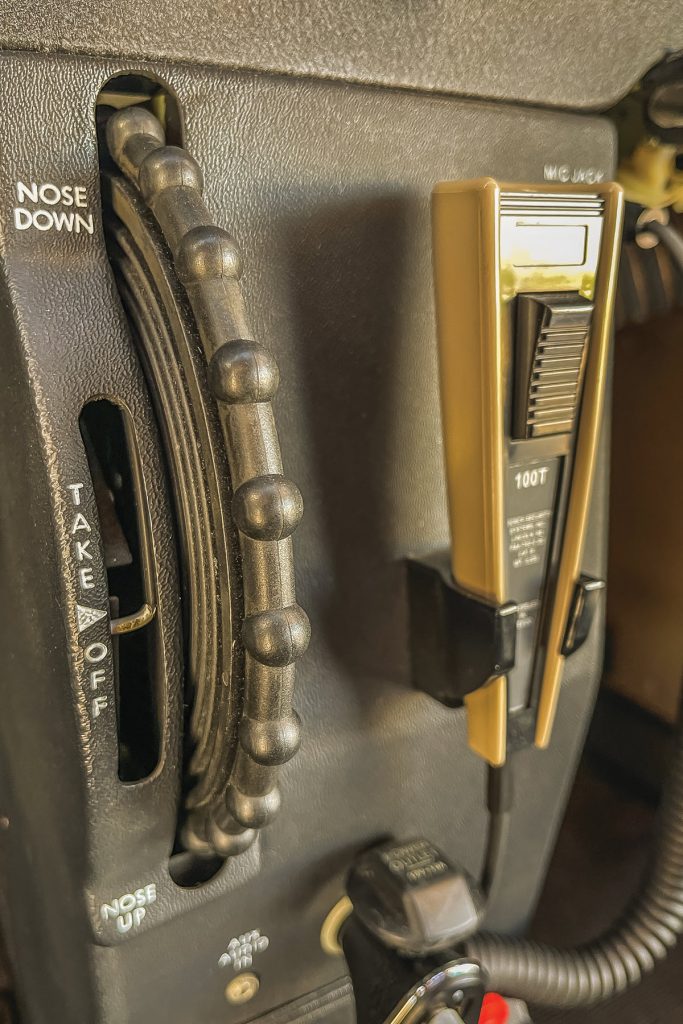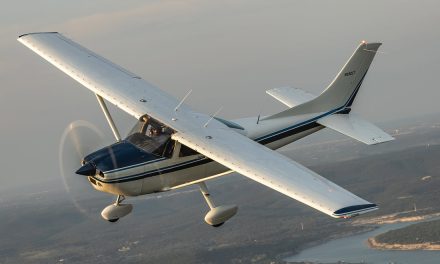
By Michelle Adserias
“I was fascinated by aviation before I had ever attended my first day of school.”
Brad Lee is not exaggerating. When he was just five years old, before he started kindergarten, Brad broke his arm. The local hospital put his arm in traction for several days. He passed the hours watching aircraft turn from base to final at the local airport through his window. He was hooked.
During his grade school days, he frequently road his bike to Lawrence Municipal Airport (KLWM) to get a closer look at the majestic Northwest Airlines DC-3 aircraft taking off and landing. Once he was in high school, Brad was determined to get a job, any job, that would get him closer to those planes. He begged the Cessna dealer for a job. “The following day I entered my dream of being in aviation. I was at work at Four Star Aviation cleaning toilets, floors and windows – and I loved it.”
Gradually, Brad moved up in the ranks. He graduated from cleaning the building to cleaning and refueling the planes, then to working on them as a mechanic’s helper, where he also opened and closed planes for annual inspections. His favorite plane to work on was a new blue and white Cessna 172. He swapped work hours for flight hours and was able to complete his Private Pilot Certification. He went on to earn his commercial, multi-instrument, and A&P while attending college in St. Louis, again working for local aircraft dealers and swapping sweat time for flying time.
Love at First Sight
Brad and his wife, Pat, had been married for about three years when Brad found the aircraft he wanted to buy. It was 1976 and Brad had just transferred to Austin, Texas with the Cessna Aircraft Company. While visiting a dealership, he found a 1946 Aeronca 7BCM Champ sitting in the maintenance shop. The owner wasn’t flying it anymore and wanted to sell it.
“It was love at first sight.” But Brad wasn’t sure Pat would understand why he wanted to purchase his own plane. After all, he flew free-of-charge almost every day, visiting customers and dealers. So, Brad reminded her of the fun, spur of the moment flights they took while dating. That cute little airplane would give them the freedom to fly together again.
Pat loved the idea. They bought the Champ and enjoyed it for about ten years; balloon popping, flour bombing, beach landing and formation flying. It even made a brief appearance in the movie “Roadie.” But once kids and dogs were added to the family, they sold it and bought something the whole family could enjoy. It was well-loved and missed. “That little plane was more affordable fun than anything we’ve ever owned.”
N53564 Becomes N173PB
Over the years, Brad and Pat have owned several different aircraft. One was a DC-3 like those he watched land and take off as a kid. He and a friend bought it together and both got type rated in it, then sold it back into the air freight system. He owned and flew the same B55 Baron for nearly 24 years. When he began to feel he wasn’t flying it enough to keep his light twin skills as sharp as they should be, he reluctantly sold his “old friend.” But, things have come full circle. Brad and Pat now own a Cessna 172 Skyhawk similar to his favorite blue and white Cessna from his high school years.
Each time they bought a new plane, the couple considered changing its N number. They even had one picked out and reserved: N173PB – 173 for their wedding month and year (January, 1973) and PB for their initials. But each time they decided against it because they had no time to make it happen. Finally, when they purchased N53564, they decided it was now or never. With help from some patient and devoted friends, they removed the vinyl numbers (and the associated glue) from the airplane and added their new N number. They were both pleased with the outcome. “I can highly recommend changing ordinary aircraft registration numbers to marriage-related numbers to any aircraft owner who might enjoy a mega-serious boost in spousal points.”
It was Pat who was interested in buying this aircraft when it became available. Manufactured in 2003, it had spent its entire life as a flight school aircraft, anchored outdoors; first in Arizona and then in Austin, where it received a Mattituck overhaul. “Truthfully, the 172S just happened along at the right time and sort of chose us – along with a little encouragement from Pat.” So, they purchased it and moved it into a hangar.
Dependable and Affordable
This Cessna 172S had twelve years and three thousand hours of flight school wear on it, and it had lived outdoors all those years, but the airplane was only twelve years old so it was still in quite good condition when the Lee’s acquired it.
According to Brad, there’s nothing not to like about his Skyhawk. He is enjoying its 118 KTAS, an MFD and lots of fuel capacity. It holds 53 gallons of fuel, which equates to a four-hour range plus a one-hour reserve.
He also appreciates the factory-installed King avionics, which include a two-axis autopilot with altitude alert and preselect, with one exception – the King KLN-94 GPS. He worked hard to do more with that GPS than “Direct To” and “Enter.” Despite his efforts, he and that radio could not communicate. So, in 2019, he had Central Texas Avionics (KGTU) replace it with a Garmin GNX-375. It has ADS-B in and out, couples to KAP-140, communicates with iPad flight plan, has full airport database available with all IFR charts including Approach Plates, Safe Taxi, Traffic and will shoot an LPV approach. “It is a beautiful piece of equipment, especially on longer cross-country trips.”
The only other change Brad would consider making is installing an HSI. However, since he flies less than 50 hours a year, he’s decided the investment isn’t worthwhile.
Furthermore, “the Cessna 172 series of aircraft is the most economical and maintenance-friendly aircraft in the sky.” It’s not the fastest plane, but it’s the best value for the money. Insurance, hangar and annual inspections are a fixed cost of about $8,000 per year. Beyond that, it costs $55 per hour for fuel. Because it is a relatively new aircraft, it has few maintenance problems. And because Cessna is still making this model, parts are readily available.
While Brad usually finds parts through normal channels, a friend recently introduced him to McFarlane Aviation, which he sometimes uses for OEM replacement parts.
The rest of this article can be seen only by paid members who are logged in.Have a website login already? Log in and start reading now.
Never created a website login before? Find your Customer Number (it’s on your mailing label) and register here.
JOIN HERE
Still have questions? Contact us here.














